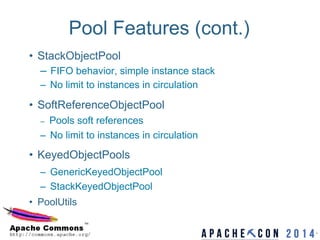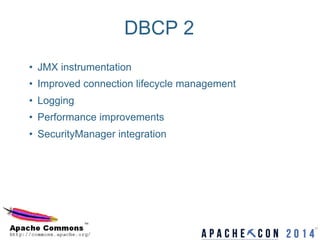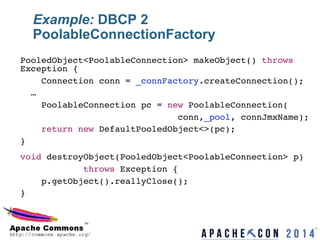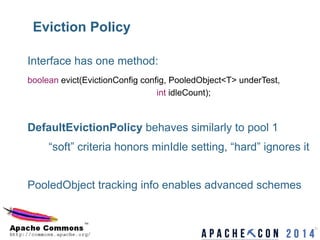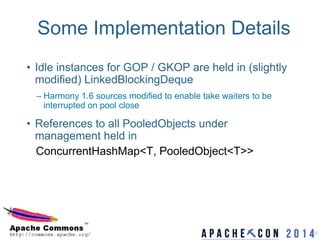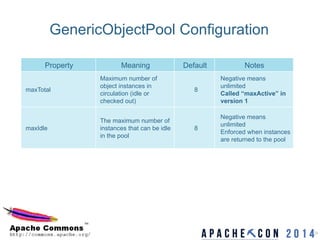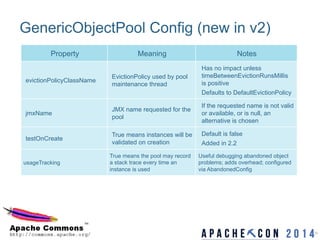This document provides an overview of updates to the Commons Pool and DBCP projects in versions 2.0 and 2.2. It discusses new features in the object pooling framework like improved performance, metrics collection, and flexible configuration options. It also outlines changes in the DBCP connection pooling implementation, including better monitoring, validation, and security integration.





